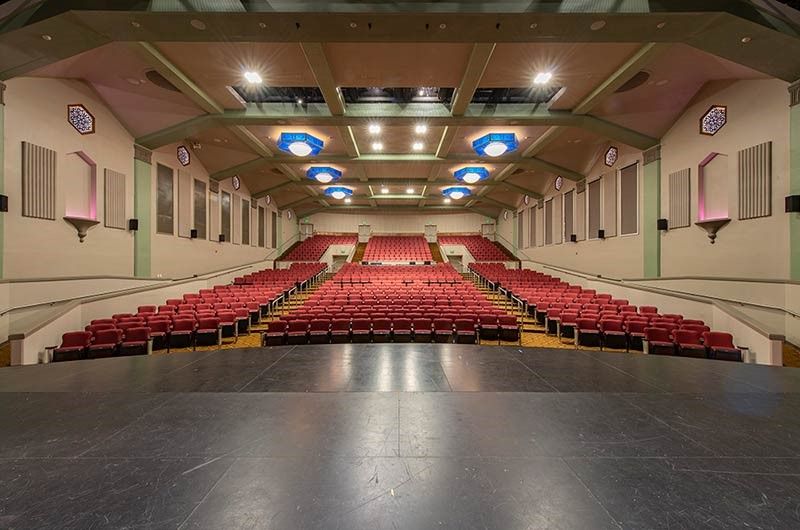The C.K. McClatchy High School is the oldest high school in Sacramento, CA, and serves 2,000 students. Recently, it launched the C.K. McClatchy Theater Project, a $23 million initiative designed to attract students interested in arts. The improvements included a complete renovation of the art deco auditorium, which was originally built in 1937.
Although the auditorium was gutted down to the dirt inside, the new design retained the original shell and many features of the original build, including stained glass windows and the vaulted ceiling structure. A key element of the renovation that wasn’t period, however, was the installation of a state-of-the-art Yamaha Active Field Control (AFC3) system as part of the new AV system.
A critical component of an AFC3 system are the microphones. Yamaha has a very small set of microphone models certified for use in its AFC3 system; the approved set includes the Audix SCX1 studio condenser and the Audix M1280B miniaturized condenser. For the McClatchy project, both Yamaha systems design engineer Joe Rimstidt and the consultant, Brian Smith of Acoustic Engineering Consultants, specified the SCX1.
“The SCX1 is a great value, given its wide dynamic range and a low noise floor,” said Rimstidt. “Audix also offered both polar patterns we needed and the character of the sound between patterns was very consistent.”
Gary Roda, CTS, audiovisual sales engineer for Quality Sound, was the lead on the AFC project. The McClatchy auditorium was the first AFC project for Quality Sound; it was also the first AFC system in Northern California. The AFC3 system employs eight Audix SCX1 mics—two matched pairs (SCX1CMP) of cardioids at the proscenium, and four SCX1 omni’s (SCX1O) about 30 feet offstage
Another critical component of the AFC3 system were the loudspeakeres. Sixty-eight Yamaha loudspeakers were installed, including twenty-four IF2205 units flown on battens over the stage, twelve IF2108 early reflection units mounted on sidewalls, and thirty-two VXC8W flush-mount units installed in the ceiling over 30 feet above the sloped floor.
“Although the AFC3 system can be used to create any type of acoustical environment you might wish, we reduced the complexity by setting up simple access to a half dozen preset scenarios through a Crestron touch screen,” said Roda. “These provide a wide variety of useful settings while keeping things manageable for the student operators.”
The results have been very well received, according to Audix. “The response from the users has been very positive; they are amazed at the ability of the AFC3 system to instantly transport the listener to another acoustic space entirely,” concluded Roda. “The well-engineered acoustical treatment of the space designed by AEC really allows the AFC3 system to shine. Overall, this was a very successful project for all concerned.”











